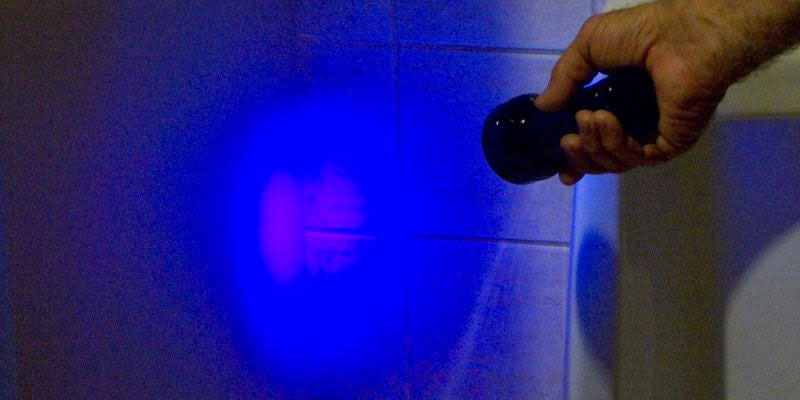
Mould. It’s a homeowner’s nightmare, lurking in the shadows, feeding on moisture, and potentially impacting your health. While some mould is visible, much of it hides in the dark corners of our homes, especially in damp areas like bathrooms. Enter the UV torch, a tool that can help you uncover these hidden dangers and take proactive steps to protect your family.
Why Use a UV Torch for Mould Detection?
Many types of mould, when exposed to ultraviolet (UV) light, will fluoresce, meaning they glow. This is because certain organic compounds in the mould react with the UV light, emitting a visible light. This fluorescence can make mould colonies easier to spot, even in dimly lit or hard-to-reach areas. While not all moulds fluoresce under UV light, and other substances can also react, a UV torch can be a valuable first line of defence in identifying potential mould growth.
How Does it Work?
UV torches emit ultraviolet light, a type of electromagnetic radiation invisible to the human eye. When this UV light strikes certain substances, like some types of mould, it causes them to absorb the UV energy and then re-emit it as visible light, creating the glowing effect. This fluorescence helps differentiate mould from other substances that might look similar in regular light.
Choosing the Right UV Torch for Mould Detection:
For mould detection, a long-wave UV torch (around 365nm) is generally recommended. While short-wave UV light (around 254nm) can also cause some moulds to fluoresce, it’s more dangerous to human skin and eyes. Long-wave UV light is less harmful and still effective for detecting many common household moulds. Look for a torch with a decent output (measured in milliwatts) for better visibility. A compact and portable design will also be beneficial for navigating tight spaces.
Where to Look for Mould with a UV Torch:
- Bathrooms: Focus on areas prone to moisture, such as around the shower or bathtub, under the sink, and behind toilets. Check grout lines, tile surfaces, and any areas where water might splash or accumulate.
- Kitchens: Look under the sink, around dishwashers, and near any plumbing fixtures. Check for leaks and water damage.
- Laundry Rooms: These rooms are often humid, making them susceptible to mould growth. Inspect around washing machines, dryers, and any areas where spills might occur.
- Basements and Crawl Spaces: These areas are often damp and poorly ventilated, creating ideal conditions for mould.
- Walls and Ceilings: Check for water stains or discoloration, which could indicate hidden mould growth. Pay particular attention to areas around windows and doors where condensation can occur.
- HVAC Systems: Mould can grow in air ducts and vents. While you might not be able to see it directly, a musty smell coming from your vents could be a sign of mould.
Using the UV Torch for Mould Detection:
- Darken the Room: Turn off the lights for best results.
- Scan Slowly and Methodically: Shine the UV torch on the areas you want to inspect, moving slowly and systematically.
- Look for Fluorescence: Mould may fluoresce in shades of green, yellow, or orange. However, remember that other substances can also fluoresce, so further investigation is often needed.
- Document Your Findings: Take photos or videos of any areas of concern.
Important Considerations:
- UV light is not a substitute for professional mould inspection: While a UV torch can help you identify potential problem areas, it’s not a definitive test for mould. If you suspect a significant mould problem, it’s essential to consult with a qualified mould inspector.
- Safety First: Even long-wave UV light can be harmful with prolonged exposure. Avoid shining the light directly into your eyes or on your skin for extended periods.
- Clean and Dry: The best way to prevent mould growth is to control moisture. Fix leaks promptly, ensure proper ventilation, and keep areas clean and dry.
Conclusion:
A UV torch can be a valuable tool in your arsenal against mould. By shining a light on these hidden dangers, you can take proactive steps to protect your home and your health. However, remember that UV detection is just one part of a comprehensive mould prevention and remediation strategy. If you have serious concerns about mould in your home, don’t hesitate to consult with a professional.
